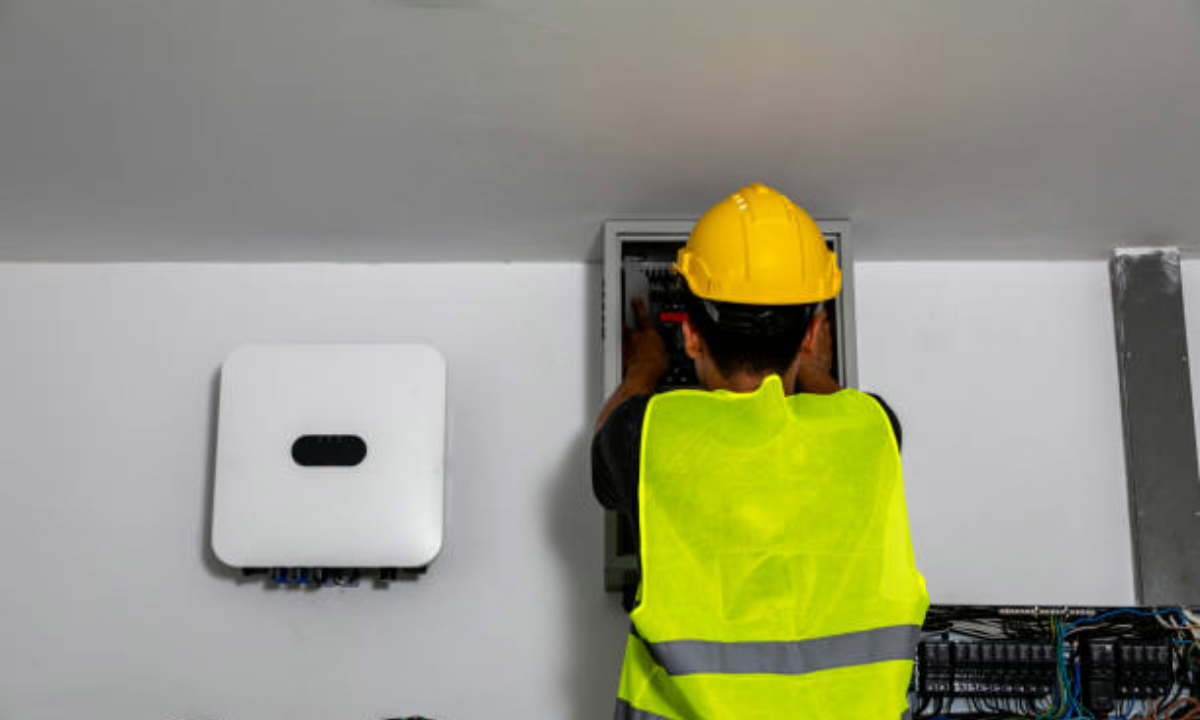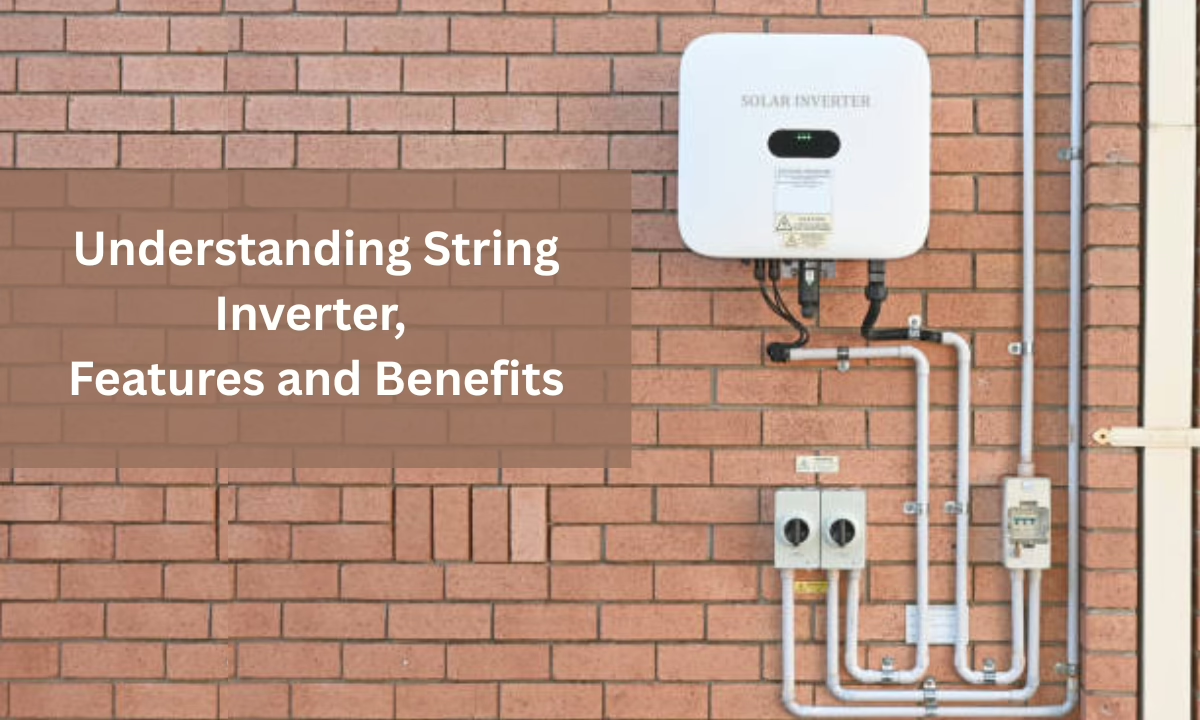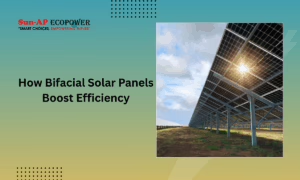Understanding What is a String Inverter
A string inverter is a central component in solar energy systems, responsible for converting direct current (DC) electricity generated by solar panels into alternating current (AC) electricity that can be used in homes or businesses. It is named “string” because it connects a series of solar panels, often referred to as a “string,” into a single inverter.
The significance of a string inverter lies in its ability to efficiently convert energy while maintaining a streamlined setup. For solar installations with similar roof orientations and minimal shading, string inverters provide a highly effective and economical solution.
How Does a String Inverter Work?
In a solar system setup, each panel produces DC electricity. When multiple panels are connected together in a string, the combined output flows to the string inverter. This inverter then converts the entire array’s DC output into usable AC power. Once converted, the electricity can be used on-site or fed into the power grid.
The functioning of a solar string inverter relies on monitoring the voltage and current from the solar panel string. It adjusts the operation point to extract the maximum possible power, using algorithms like Maximum Power Point Tracking (MPPT). The converted AC power is then sent to the main electrical panel for distribution.
Key Features of a String Inverter:
- Centralized DC to AC conversion
- Higher efficiency in unshaded conditions
- Cost-effective setup for uniform panel arrays
- Simplified system monitoring via centralized data
String Inverter Installation

Proper string inverter installation is crucial for optimal performance. It involves connecting multiple solar panels in series and ensuring that the total voltage does not exceed the inverter’s specifications. The inverter is typically mounted close to the main distribution panel or near the solar array for efficient wiring.
Key aspects to consider during string inverter installation include:
- Correct orientation of panels in the same direction
- Limiting shading to prevent energy loss
- Compliance with electrical and safety codes
- Adequate ventilation for heat dissipation
Professional installation ensures the inverter operates at peak efficiency and minimizes long-term maintenance.
Advantages of Using a String Inverter
1. High Efficiency in Uniform Conditions
String inverters perform best when all panels in the string receive equal sunlight. With consistent orientation and minimal shading, these inverters can convert solar energy into electricity at high efficiency levels.
2. Simplified Maintenance
Since there is only one inverter managing the entire system, troubleshooting and maintenance are easier. Centralized data logging and diagnostics help in identifying and resolving system issues promptly.
3. Lower Initial Investment
Compared to other solar power inverter types, string inverters offer a cost-effective option. The reduced hardware and installation requirements make them suitable for budget-conscious solar adopters.
4. Easy Scalability
Expanding a solar system using string inverters is straightforward. Additional strings can be connected to the inverter if capacity permits or through the use of multiple inverters for larger systems.
5. Limitations to Consider
While string inverters offer numerous advantages, they may not be ideal in every scenario. Shading on even one panel in a string can affect the output of the entire series. This makes them less suitable for installations with varying orientations or obstructions like trees or chimneys.
String Inverter vs Other Solar Power Inverter Types
There are multiple solar power inverter types, each with its advantages. Compared to microinverters and power optimizers, string inverters are:
- More cost-effective
- Easier to maintain due to centralized architecture
- Less flexible in complex roof layouts
Choosing the right inverter type depends on the installation site and energy goals.
Factors Affecting String Inverter Performance
Several elements can influence the performance of a solar string inverter, including:
- Panel orientation and tilt: Uniform orientation boosts efficiency
- Temperature variations: Excessive heat may reduce performance
- System voltage and current levels: Must be within the inverter’s capacity
- Installation quality: Faulty wiring or loose connections can reduce efficiency
Proper design and installation are essential to achieve optimal inverter performance.
Monitoring and Maintenance
A major advantage of string inverters is the ability to monitor performance from a single point. Many modern inverters offer remote monitoring capabilities, allowing users to check energy production and system status through mobile or web platforms.
Routine maintenance includes:
- Cleaning the inverter’s vents
- Checking wiring for wear or corrosion
- Verifying firmware updates and system logs
Preventive checks ensure long-lasting and efficient performance.
Where String Inverters Work Best
String inverters are best suited for:
- Solar installations with uniform roof angles
- Large-scale residential and commercial systems
- Areas with little to no shading
Understanding the site conditions helps in determining if a string inverter is the most efficient and economical choice.
Installation Safety and Compliance
Adhering to safety standards during string inverter installation is critical. This includes:
- Proper grounding of the inverter and panels
- Using DC and AC disconnects
- Ensuring over-voltage protection
- Compliance with local building codes and electrical regulations
Certified installers should always handle the installation to maintain warranty and safety compliance.
Trends in String Inverter Technology
Modern string inverter designs incorporate features like:
- Multi-MPPT configurations for improved flexibility
- Higher input voltage ranges for expanded compatibility
- Enhanced digital monitoring and smart grid integration
- Compact and weather-resistant enclosures for outdoor installations
These innovations make string inverters more efficient and user-friendly than ever before.
Conclusion
The string inverter remains one of the most reliable and efficient components in modern solar installations. Understanding what is a string inverter, how it works, and the benefits it offers helps individuals and businesses make informed decisions for their solar energy needs. Whether planning a new solar project or upgrading an existing system, ensuring a proper string inverter installation is vital for long-term success.
As interest in solar energy continues to rise, companies like Sunap Ecopower are contributing to a cleaner, greener future by offering innovative solutions in solar technologies. Their expertise in solar string inverter systems supports India’s growing commitment to sustainable energy.




